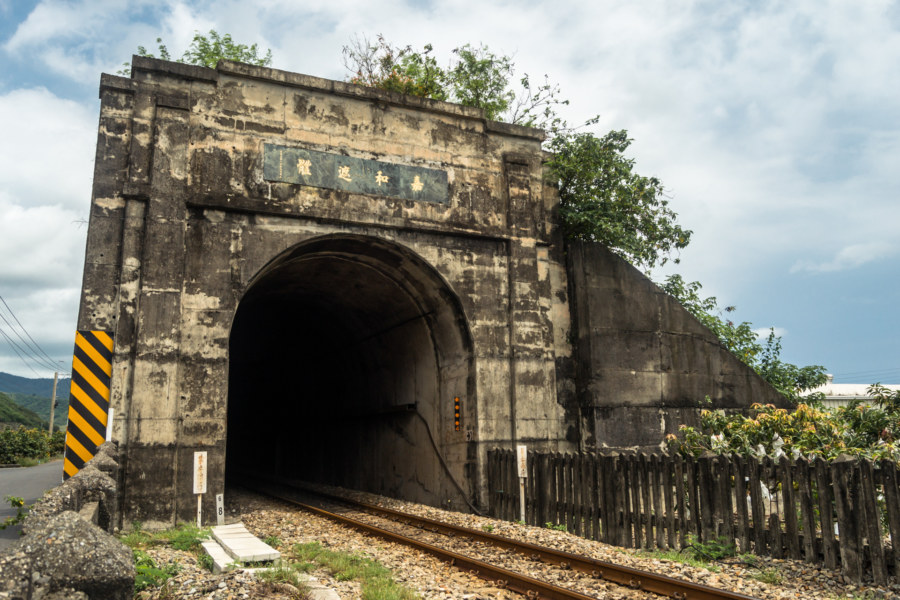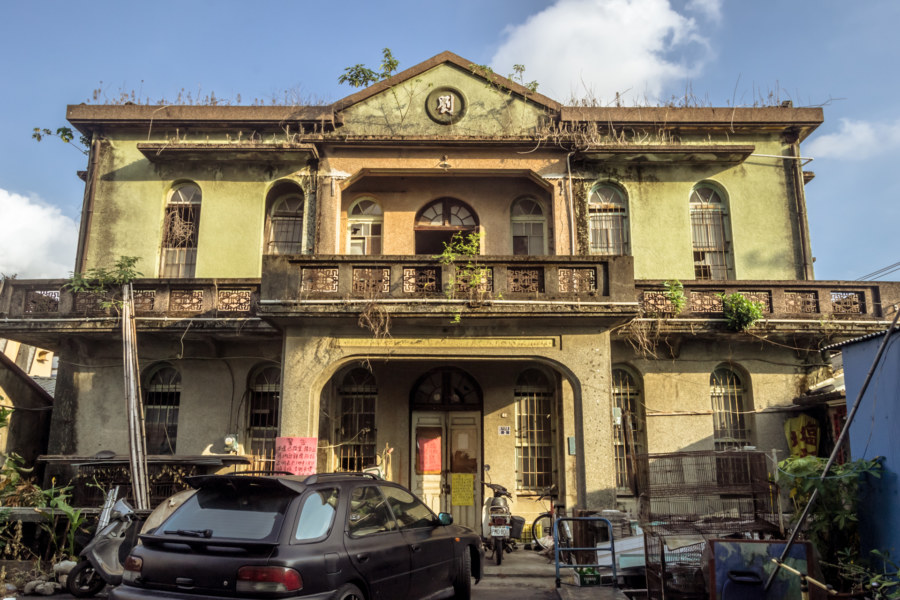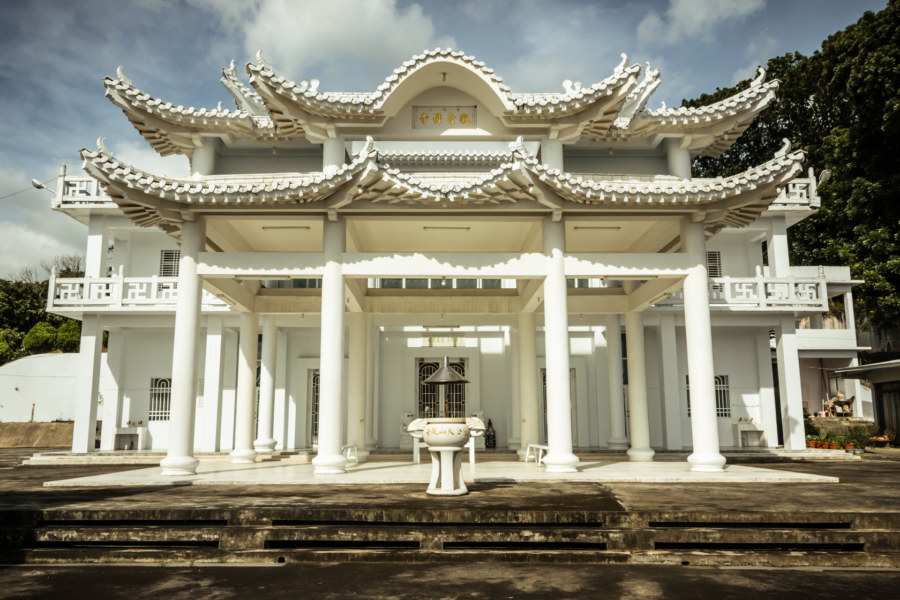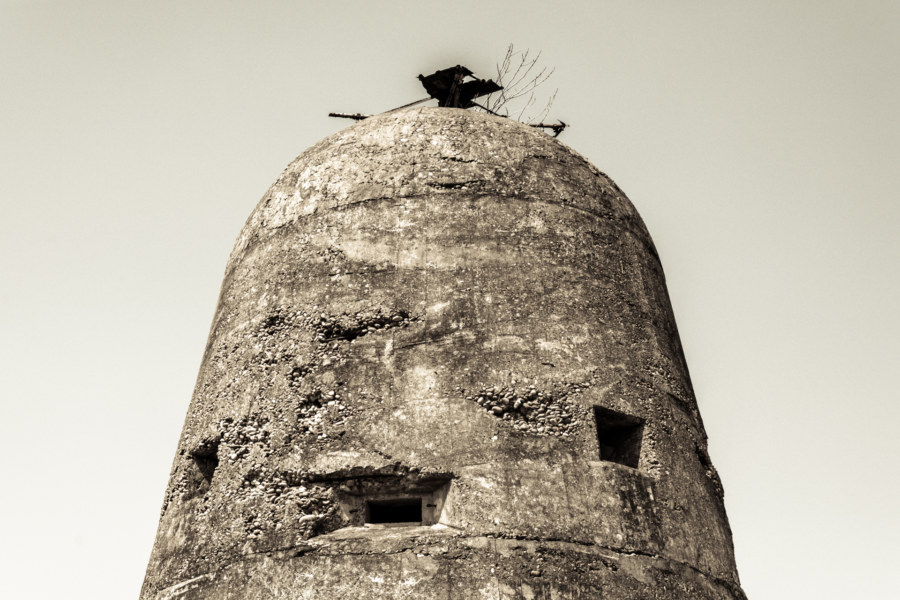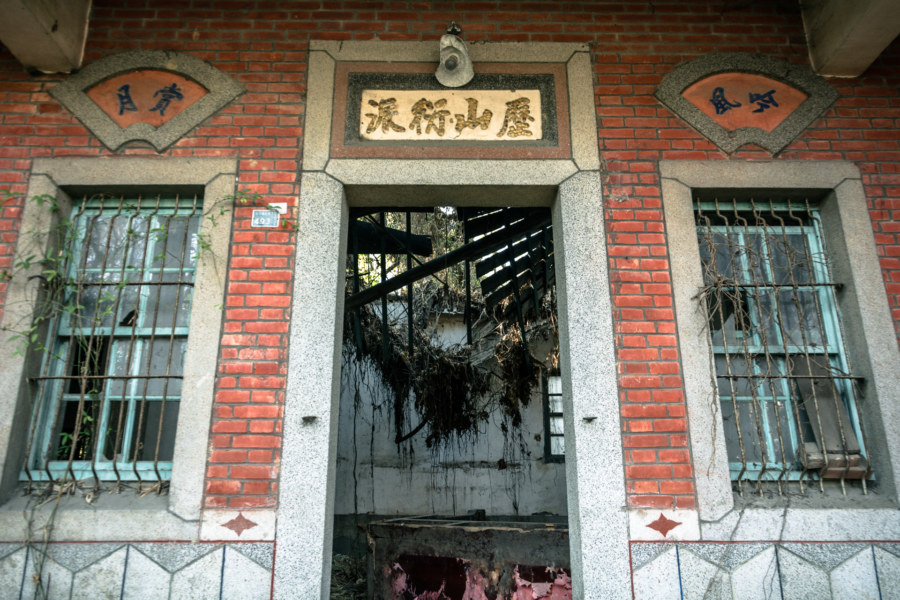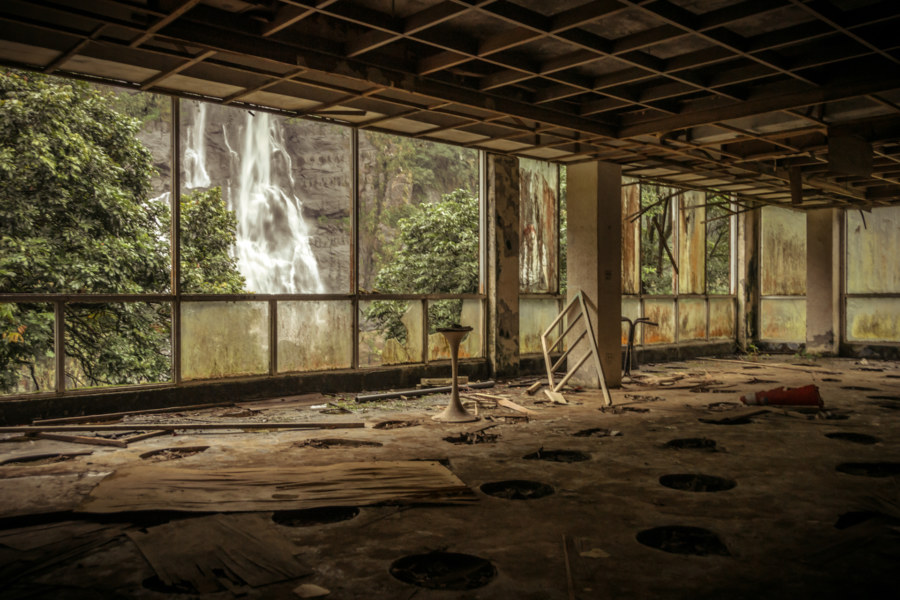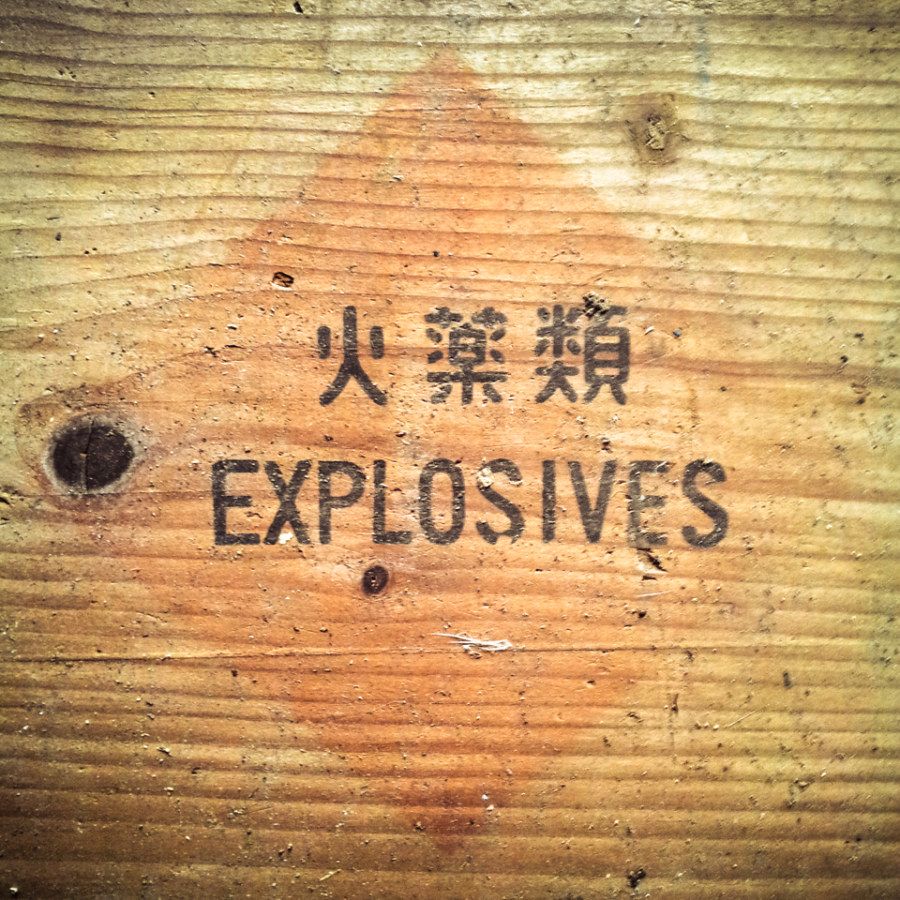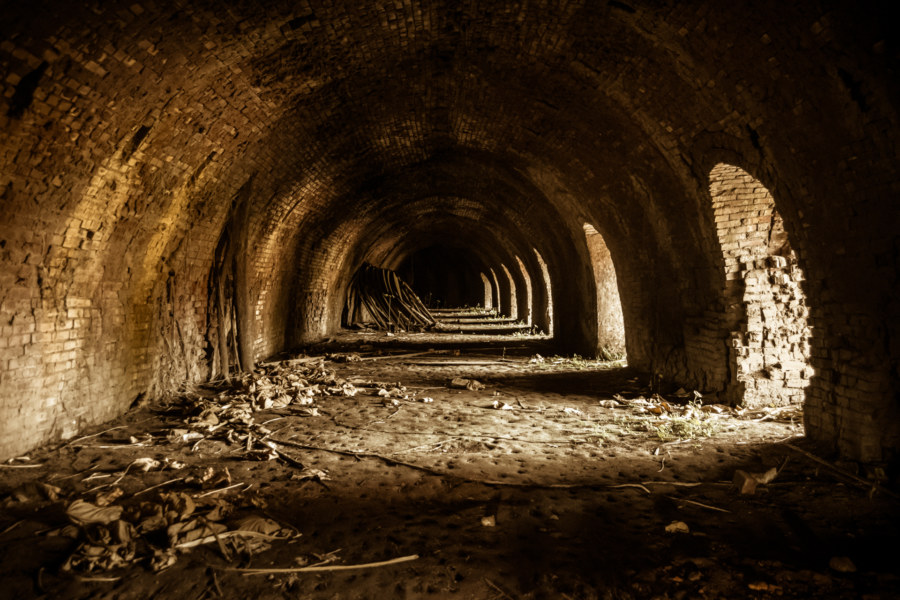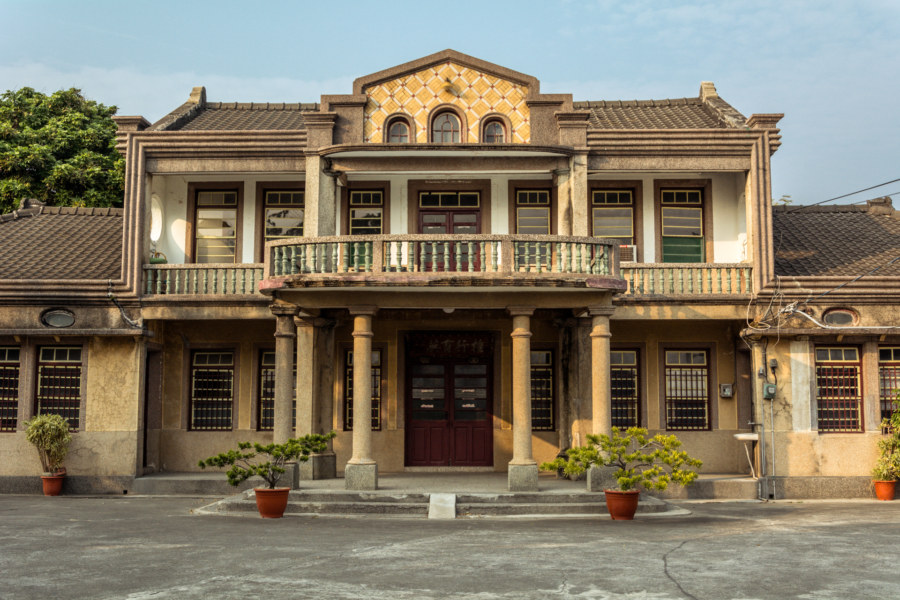Here is yet another roadside curiosity in the deep south of Taiwan: a false tunnel on the coastal plains of Fangshan, Pingtung. It doesn’t cut through any mountainside nor is it built to withstand landslides. It’s just an 1,180 meter tunnel that trains pass through for no discernible reason. I first read about this on Michael Turton’s blog and later saw it on my first round-the-island bicycle tour. More recently I took a spin around the southern loop once more, and spent a little extra time examining this concrete oddity in an attempt to divine its purpose.
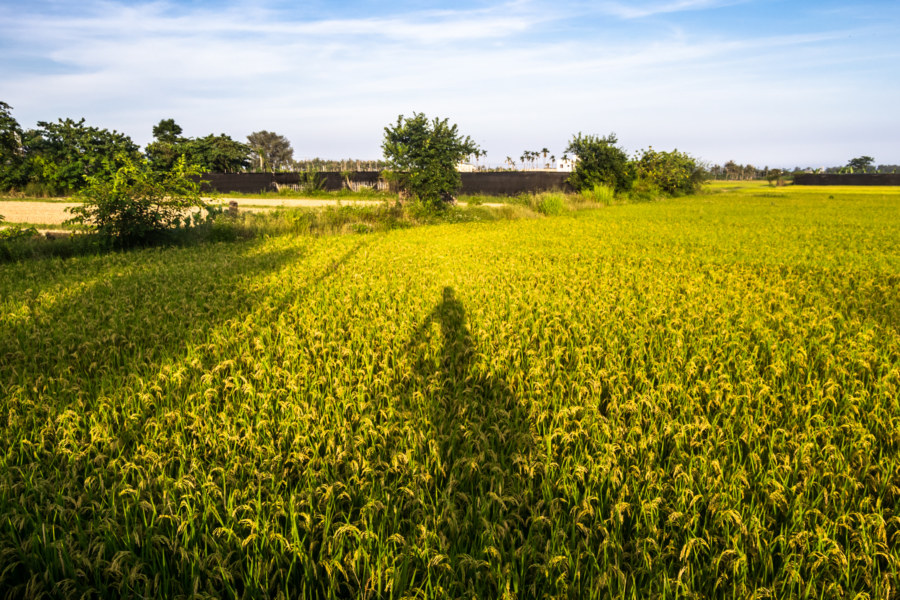
Dispatches from the countryside, beyond the dense urban cores, amidst the long fields and low buildings. See also: agricultural, landscapes, and mountains.
Adjacent Terms
Xinpi Machine Gun Fort 新埤反空降機槍碉堡
While cycling through Xinpi, an otherwise ordinary expanse of rural Pingtung, I was surprised to see a sign indicating that there was a “fort” somewhere in the area. I cut loose from the main road I was following and went to go investigate. After following a bend in the river just outside a small settlement I found it: a Japanese anti-aircraft fortification dating back to the late 1930s or early 1940s. I haven’t found a formal name for this fortification so I’m going to call it the Xinpi Machine Gun Tower 新埤反空降機槍碉堡 until I hear of something better.
Chaozhou Liu House 潮州劉厝
I noticed this old-fashioned western-style mansion on the outskirts of Chaozhou in Pingtung while cycling through the deep south of Taiwan in 2015. In a sea of ugly metal shacks and bland concrete apartment blocks it is a rare pleasure to encounter a building like this one. I also enjoy the challenge of trying to learn something of the history of such places. Usually with some knowledge of the local area and the family name on the facade I can piece something together from blogs and government records—but this time I’m stumped, and I’m not the only one. Just about all that is known for certain is the name, Liu House 劉厝, which came up in some real estate records. Based on my growing familiarity with Japanese colonial era architecture I would guess this mansion dates back to the 1930s or so.
Putuoshan White Temple 普陀山白衣道場
Pǔtuóshān White Temple (普陀山白衣道場) is one of the more unusual temples I have visited in Taiwan. Named after Putuoshan, one of the holy mountains of Chinese Buddhism, and dedicated to the worship of Guanyin (觀音), goddess of mercy, it appears to have been built in 2004. Apart from these basic details it seems like very little is known about this mysterious temple.
Changhua Aerodrome Fortifications 彰化飛行場古砲台
One of my idle pursuits this mild winter has involved documenting all the obscure and unusual stuff I find in my travels around Changhua. When I go riding I prefer to take winding roads that twist and turn through old villages rather than the newer thoroughfares that directly connect communities in the countryside. Sometimes this pays off—for instance, while exploring some of the side roads on my way to Lukang I found this strange looking building amid the rice fields and rural industrial sprawl.
Hemei Yao Family Old Home 和美姚家老屋
I went out riding through Hemei not so long ago, drawn by the allure of a mysterious building that I will write about sometime soon. On the return trip I noticed this old home peeking out of the woods at the side of Zhāngxīn Road 彰新路, better known as highway 139. I don’t stop every time I see the signs of abandonment—for I would never get anywhere at all in rural Taiwan if I did so—but this place seemed worth a look. After pushing through the overgrowth I was impressed by the beauty of the stonework and inscriptions on the outside of the building.
Wulai Qingpu Hotel 清瀑大飯店
While on a day trip to Wulai at the very end of 2013 I was delighted to stumble upon one of the most picturesque abandonments I have had the pleasure of exploring in Taiwan. Mere steps from the southern terminus of the Wulai Sightseeing Tram 烏來觀光台車 one will find a viewing platform across from Wulai Falls 烏來瀑布, one of the most scenic waterfalls in the greater Taipei area. What you might not realize—unless you have a sixth sense for all things abandoned—is that the viewing platform doubles as the rooftop of a derelict hotel with a rather stunning view.
Jinguashi Old House 金瓜石老屋
One of the enduring mysteries of abandoned Taiwan is this: why do people leave so much stuff behind when they go? I understand there might not be any descendants or close friends to go through the belongings of the departed—but what about when entire families pick up and move? Sure, leave the junk behind (and there’s lots of that), but what about children’s toys, letters and diaries, old schoolwork, music, book, and movie collections, and photographs? It is almost as if entire families undergo a kind of ritual metamorphosis, pupating within their former domiciles, emerging transformed and casting away the remnants of their former lives, all the miscellaneous detritus and kipple that naturally accumulates in the course of everyday affairs.
Jinshuncheng Hoffmann Kiln 金順成八卦窯
Jīnshùnchéng Hoffmann Kiln 金順成八卦窯 is located on the eastern Changhua Plain 彰化平原 in Huatan, a rural township south of Changhua City. During the Japanese colonial era this part of Taiwan specialized in brick and ceramic production due to plentiful supplies of high-quality clay, and the industry continued to expand after the arrival of the KMT. This particular kiln only dates back to the early 1960s and is the last of its kind in Changhua. For that reason the county government designated it a historic building in 2010 but very little has been done to clean the site and make it inviting to visitors.
Huang Sanyuan Residence 黃三元故居
Huáng Sānyuán Residence (黃三元故居) is a beautiful Western-style house located along a country road in Puxin, a rural township in the heart of Changhua, Taiwan. It was built in 1940 by Huáng Yì 黃義, a wealthy employee (and presumably an executive) of the Japanese colonial era Taiwan Sugar Company (台糖公司). If this government source is to be believed Huang Yi had five wives who bore him five sons—and some unknown number of daughters. No wonder he needed such a large house!
